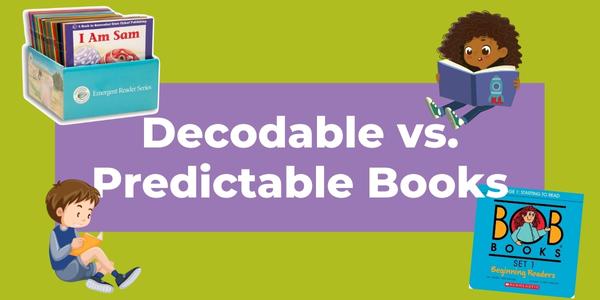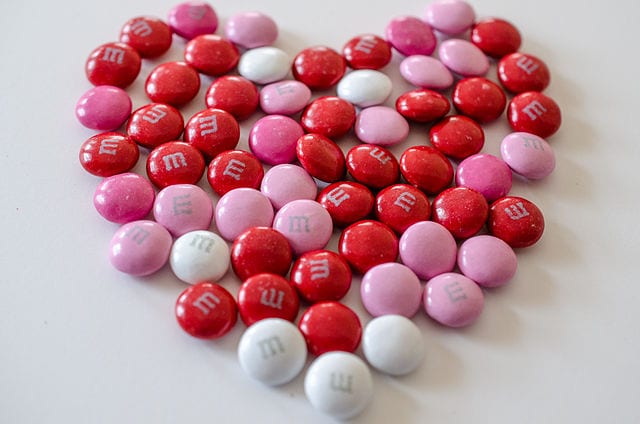“Brown bear, brown bear, what do you see?”
How many of you immediately knew the next line? That’s because it’s a predictable text!
Children love predictable texts. They love being able to anticipate the next line. They love being able to sit down and “read” the book independently as they turn the pages.
But, is it reading? Do predictable children’s books help or harm their ability to read?
The answer is… both.
What is the Difference Between Decodable and Predictable Books?
Predictable Books
A predictable text is when the same sentence structure is repeated from page to page but with a few words changing. Example: We got ham. We got apples. We got bread. Many children’s books have a predictable pattern and can be wonderful books. Children love predictable texts because it builds their confidence in themselves as a reader. But, unfortunately — that confidence can often be false when it’s based on memorizing a pattern of words that they can’t actually read. They can mislead children into overestimating their reading ability. Worse, they can instill bad habits as children expect to be able to successfully guess the next word.
In my own work as a reading interventionist, I have become very wary of predictable texts. I’ve seen too many times how quickly children come to rely on the pattern of language to “guess” the next word, rather than really reading the word. This is especially true when predictable texts include words that are far beyond a child’s reading level. They can’t decode them yet, so they resort to guessing them from the picture or from the repeating pattern of text.
So, am I about to go out and round up all predictable children’s books and ban them? No! I love Brown Bear, Brown Bear! But, if we want children to build real confidence rather than false confidence in reading, we need to use predictable books with caution.
Strategies for Using Predictable Books Effectively Without Undermining Your Child’s Reading
- If your child is reading predictable text and getting into the predictable pattern, at the end of each page, have a word hunt! “Where’s the word goldfish?” Asking them to pause and point out words, will keep them from reading without being attentive to each word.
- If they get to a word that they don’t have the skills to decode yet, guide them through it. Ex. “Let’s take this word apart… I see that it starts with sal…a…man…der. Let’s put all that together. Salamander!”
- Encourage word play. Once in a while, point to a word they are successful at and ask them to play with it… Ex. “What would the word goldfish say if we took away the gold?” Practice chunking words with them: Cover up half of the word, have them read the parts in isolation, and then blend them together. Ex. gold… fish! These strategies work on your child’s ability to decode words!
- Consider covering up the pictures if your child over-relies upon them instead of reading the words. Have them read the words and then reveal the pictures! I created picture-less books for the children I work with. When they master a story, they get to draw their own pictures.
Decodable Texts
Decodable texts are just what they say they are, texts that are able to be “decoded” by your child. That means that the child uses reading skills to be able to sound out and then blend together the sounds into words. The classic example of decodable texts is the Bob books. The value in these books is that children are reading a text that they have the skills to read, so they don’t resort to habits like using pictures or patterns to guess words. They gain confidence in reading through… reading the words!
Unfortunately, it’s been my experience that many children’s texts that are labeled as “decodable” aren’t actually. How do you know if it is a decodable book? For me, if I look at a book that’s supposed to be decodable for a kindergarten student and it includes multi-syllable words or advanced vowel spellings, that’s a major red flag!
My advice to you is to have your child read the book to you. If the reader struggles with more than one out of every ten words, then the book is at a level that will only lead to frustration.
Suggested Decodable Texts
There are so many resources out there! I love High Noon Books as a great place to look for decodable books that are actually decodable and fun to read. Flyleaf Publishing also has excellent decodable books. You can’t go wrong with those little Bob books, either! I like to copy the pages and then let children color in the pictures as they master each page. Whatever decodable texts you choose, make sure your child can actually decode them and also enjoys them.
To wrap it all up…
Children learn to read best when they are exposed to a variety of reading materials. Think of building your child’s reading skills like providing them with a well-balanced meal.
You need to provide them with decodable texts for them to grow as readers. Have fun with predictable texts, but make sure to monitor them so that your child doesn’t develop bad habits.
And, don’t forget the power of reading aloud! That’s the dessert! There are so many wonderful children’s books that young children don’t have the skills to decode. Make sure to include those in your child’s literacy. When you read aloud to your child at a level beyond their reading level, you’re building their oral vocabulary. That way, when their reading ability improves, they have an advanced vocabulary to anchor their words onto. Giving your child a balanced “diet” of reading will build their skills, while also creating a love of reading. That’s, of course, what we really want.
Some suggestions for decodable beginning readers for children:
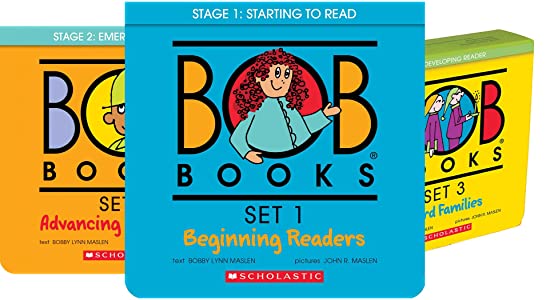
BOB Books

Flyleaf Emergent Readers
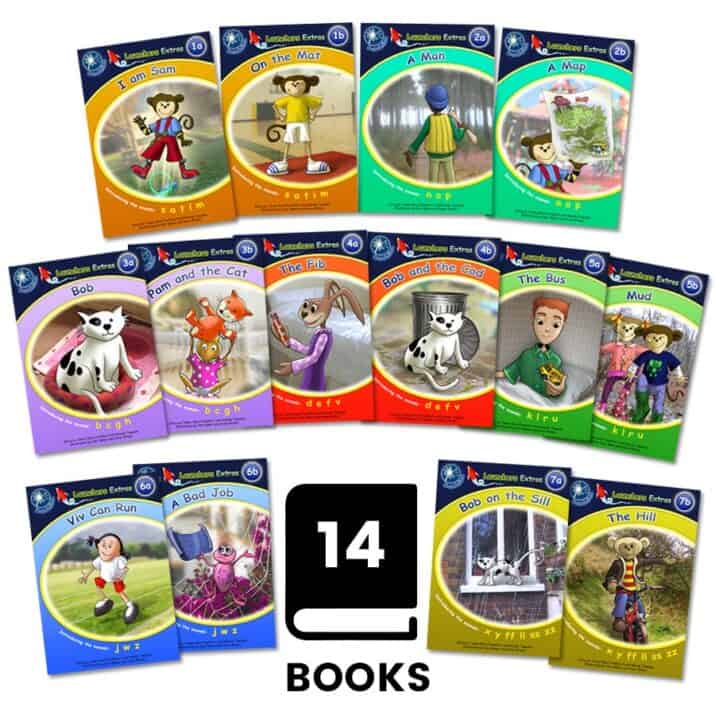
High Noon: Dandelion Launchers and Little Sprouts series
See Reading Rockets.org and Reading Simplified for more decodable book suggestions!
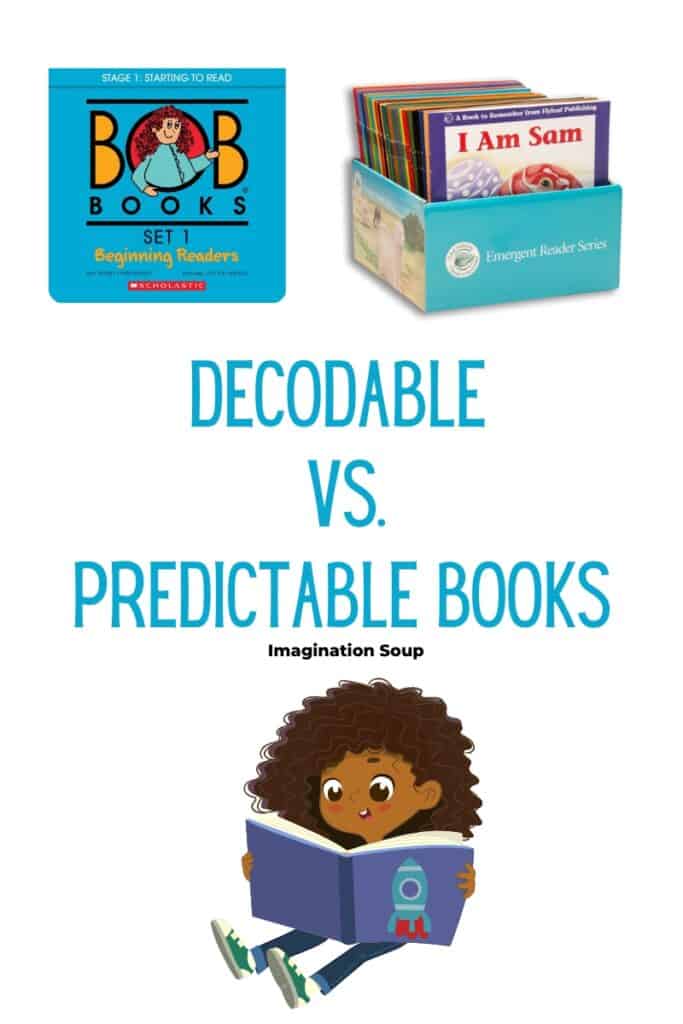

 PARENTING TIPS
PARENTING TIPS PREGNANCY
PREGNANCY BABY CARE
BABY CARE TODDLERS
TODDLERS TEENS
TEENS HEALTH CARE
HEALTH CARE ACTIVITIES & CRAFTS
ACTIVITIES & CRAFTS